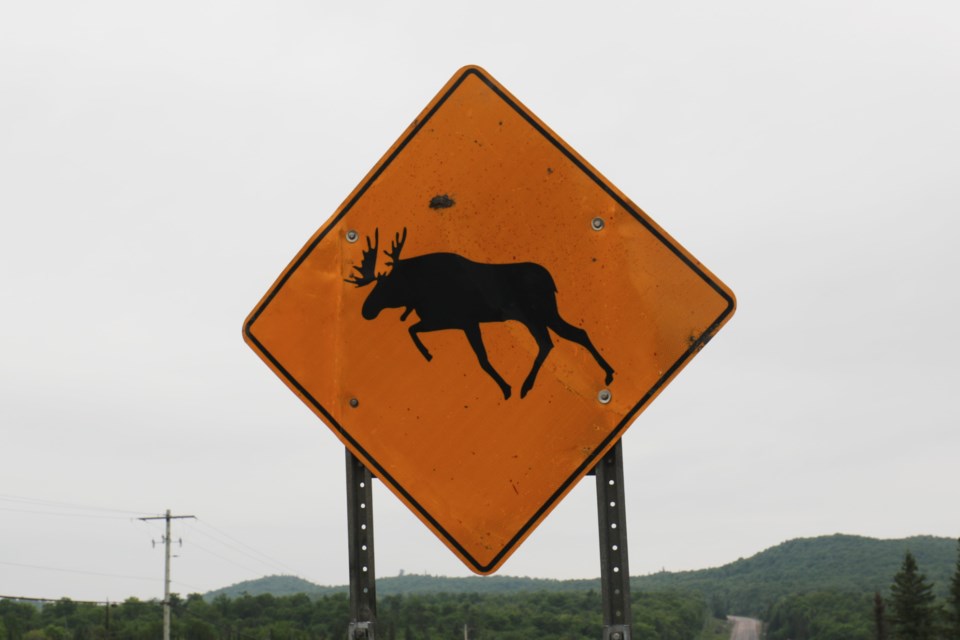The Ministry of Transportation says a detection system that was installed at the bottom of Mile Hill along Highway 17 to alert motorists to the presence of moose and other wildlife has since been decommissioned due to “several mechanical and technological challenges.”
The response from the province comes just days after a driver struck and killed a moose on the highway north of Sault Ste. Marie earlier this week, causing extensive damage to his pickup truck.
A Goulais River resident who came to the man’s aid told SooToday it was the second moose-vehicle collision in as many weeks, and lamented the fact that the wildlife detection system — which was the first of its kind in Ontario when it was introduced as a pilot project at the bottom of Mile Hill in 2009 — had been dismantled a few years back.
“The system did not result in a clear reduction of wildlife collisions and its effectiveness was inconclusive,” the ministry said in an email to SooToday.
When asked if the Ministry of Transportation (MTO) has been discussing any potential solutions aimed at reducing the threat of collisions between vehicles and wildlife for that stretch of highway, the ministry informed SooToday that signage along the Trans-Canada Highway warning drivers of moose in the area is already in place.
“A wildlife detection system is an additional warning device to alert motorists of a potential hazard. The primary warning devices that remain in place are the yellow ‘moose warning’ signs that identify to motorists they are entering an area where there has been a high incidence of moose-vehicle collisions,” the ministry said.
“Our government remains committed to keeping roads safe across our province, including in the north. A reminder that a wildlife warning sign is a yellow diamond-shaped sign. The sign warns of a hazard ahead, and advises drivers to be cautious.”
Background provided by the MTO points to wildlife fencing as being the most effective means of reducing wildlife collisions. The specialized fencing is currently installed along four lane sections of both Highway 11 and Highway 69.
The MTO implied in its email to SooToday that wildlife fencing would essentially be ineffective for the stretch of Highway 17 at the bottom of Mile Hill.
“Where wildlife fencing is combined with wildlife crossings, there has been up to a 75 per cent reduction in wildlife collisions. However, wildlife fencing is best suited to controlled access highways that don’t have gaps for intersections or driveways,” said the ministry. “Short stretches of wildlife fencing without safe crossing opportunities for wildlife result in almost no reduction of collisions, as animals simply walk to the ends of (or gaps in) the fencing to cross the highway.”
The ministry has installed a more modern wildlife detection system on Highway 11 south of North Bay as part of a trial run of its new technology. The newer detection systems have also been installed in eastern Ontario, leading to “positive” preliminary results, the ministry said.
No mention was made of that technology being rolled out on Highway 17 North.
